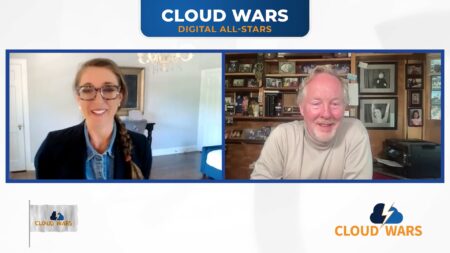
In today’s Acceleration Economy, boards are increasingly interested in technology: risks, opportunities, and — especially these days — spending. A smart chief information officer (CIO) takes advantage of that interest to educate directors about information technology (IT) and to show them how strategic investments can reduce risk while opening up new opportunities. (Really smart CIOs take advantage of board interactions as a way to educate themselves regarding the board’s views of strategy, risks, and opportunities).
There are hardly any IT investments more strategic than those involving data. Most firms are drowning in data as the “three vs” (volume, velocity, variety) have grown faster than their tools and budgets can handle. Recent advances by cloud industry firms — leaders as well as upstarts — enable firms to use data to make better, faster decisions without breaking the bank. How does a CIO get board support for modernizing data using cloud advances?
Educating the Board of Directors
Educate the board of directors (BoD) on the “information factory.” Start with the subtle yet powerful concept that “nobody needs data — what they need is accurate and timely information to drive decisions and actions.” If information is the end product, data is the raw material that is used to “manufacture’” information. If your board has manufacturing experience, this is actually an easy analogy:
Input data -> pre-delivery inspection and clean-up -> work-in-process staging -> manufacturing (for inventory or to-order) -> finished goods inventory -> delivery to customer (the whole process supported by order management, security, quality assurance/audit)
Helping the board understand that there’s a complex process from data to decision/action makes it easier to explain investments that improve each step of the process.
The Evolution of Information
Share information’s evolution from periodic, backward-looking “systems of record,” to real-time, customer- and employee-facing “systems of engagement,” to future-focused “systems of insight” with the BoD. Further, show the board where your firm is on that continuum.
Boards that assume that management decisions are driven by mature, comprehensive systems of insight might squirm in their seats when faced with the reality that their information is locked away in systems of record. If that’s the case, it’s a great place to educate them about “technical debt” so you can get their support in tackling the problem.
The Value of Data
Once the board has gained insight into your information factory, and there’s agreement about “systems of x” it’s time for them to start thinking about the value of data that is and isn’t being collected. Ask the board (after consulting with your CEO, of course) what information is critical to them in properly carrying out their fiduciary duty of care oversight responsibilities. If you already produce everything they want, great (and unlikely, in my opinion)! Otherwise, start working backward from information product through the factory to identify possibly missing data.
Now, let’s make things more interesting: As CIO, you probably have your own list of “data that’s not being collected but should be” (e.g., operational technology (OT) data from manufacturing, logistics, or even from the IoT data when your products are being used in the field). Once you’re on track to fulfill board (and C-Suite, of course) information requirements, you can help the C-Suite and board drive even better decisions and actions by educating them about data sources and information products they might not think to ask about.
How You’re Using Technology
Finally, let’s talk about technology. (If you know me, you know I’m “business outcomes first, process second, technology last.”)
If you’re a customer of a big, well-known ERP (enterprise resource planning) or CRM (customer relationship management) suite, are you running the old on-prem version? Or have you migrated to the newer SaaS (software-as-a-service) version with its outsourced infrastructure, frequent upgrades, data integrations, and modern architecture? (Not all suites are better in the cloud, but the ones that are can be much better). Are you running legacy “report writers’ geared to Systems of Record and professional report-writers or cloud-based analytics/BI (business intelligence) tools that allow citizen developers and IT pros alike to create Systems of Insight? And are you siloing data, locking it away in disconnected databases that create multiple versions of the truth — or implementing cloud “data lakehouses” designed to securely store enormous amounts of varied data and serve up information as needed by systems and users?
As an Acceleration Economy CIO, you must create ever-increasing value from data. I promise you that it’s easier to do so with board support!
Want more tech insights for the top execs? Visit the Leadership channel:










